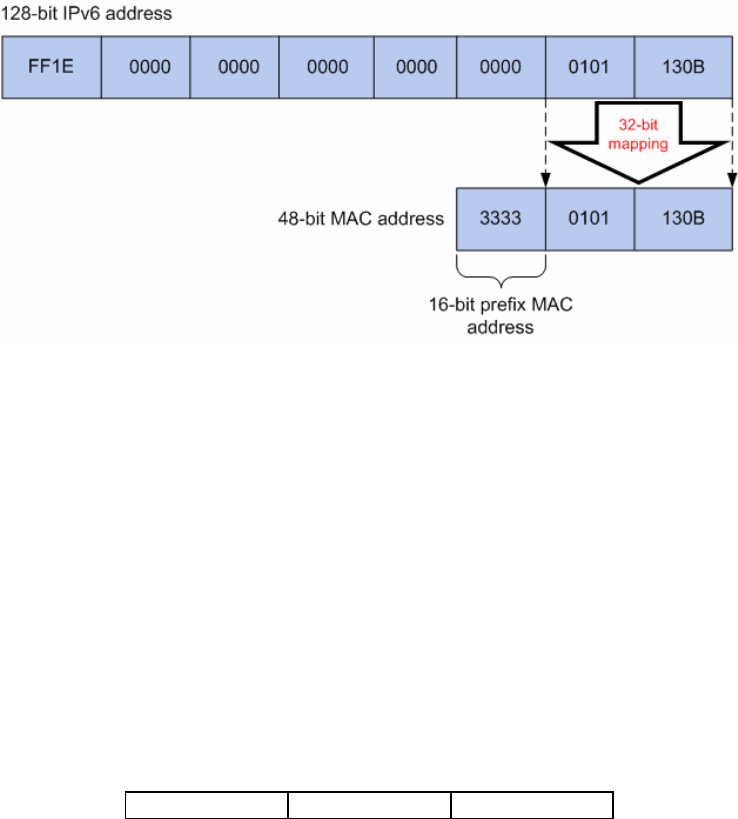
The IPv6
solicited-node multicast address has the prefix FF02:0:0:0:0:1:FF00:0000/104
concatenated with the 24 low-order bits of a corresponding IPv6 unicast or anycast address.
2. IPv6 Multicast MAC Address
The high-order 16 bits of an IPv6 multicast MAC address begins with 0x3333 while the low-order
32 bits of an IPv6 multicast MAC address are the low-order 32 bits of the IPv6 multicast IP address.
The mapping relationship is described as the following figure:
Figure 9-3 Mapping relationship between multicast IPv6 address and multicast IPv6 MAC address
The high-order 16 bits of the IP multicast address are 0x3333, identifying the IPv6 multicast group.
The low-order 32 bits of the IPv6 multicast IP address are mapped to the multicast MAC address.
Multicast Address Table
The switch is forwarding multicast packets based on the multicast address table. As the
transmission of multicast packets can not span the VLAN, the first part of the multicast address
table is VLAN ID, based on which the received multicast packets are forwarded in the VLAN
owning the receiving port. The multicast address table is not mapped to an egress port but a group
port list. When forwarding a multicast packet, the switch looks up the multicast address table
based on the destination multicast address of the multicast packet. If the corresponding entry can
not be found in the table, the switch will broadcast the packet in the VLAN owning the receiving
port. If the corresponding entry can be found in the table, it indicates that the destination address
should be a group port list, so the switch will duplicate this multicast data and deliver each port one
copy. The general format of the multicast address table is described as Figure 9-4 below.
VLAN ID
Multicast IP Port
Figure 9-4 Multicast Address Table
IGMP Snooping
In the network, the hosts apply to the near router for joining (leaving) a multicast group by sending
IGMP (Internet Group Management Protocol) messages. When the up-stream device forwards
down the multicast data, the switch is responsible for sending them to the hosts. IGMP Snooping is
a multicast control mechanism, which can be used on the switch for dynamic registration of the
multicast group. The switch, running IGMP Snooping, manages and controls the multicast group via
listening to and processing the IGMP messages transmitted between the hosts and the multicast
router, thereby effectively prevents multicast groups being broadcasted in the network.
MLD Snooping
Multicast Listener Discovery(MLD)snooping is applied for efficient distribution of IPv6 multicast
data to clients and routers in a Layer 2 network. With MLD snooping, IPv6 multicast data is
selectively forwarded to a list of ports that want to receive the data, instead of being flooded to all
134


















